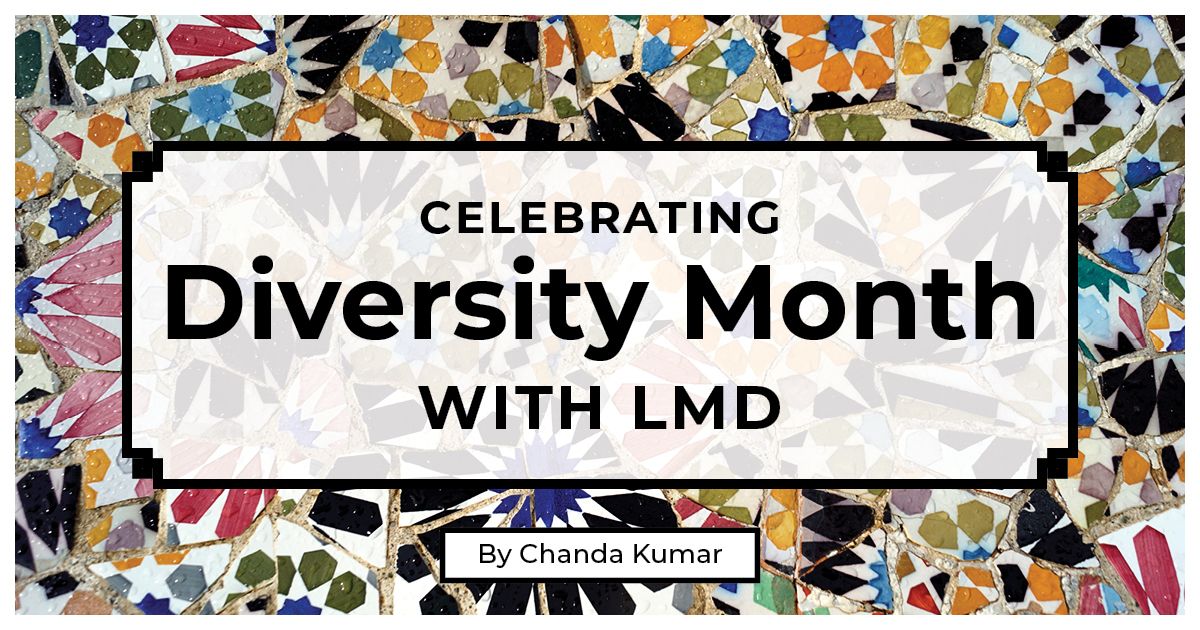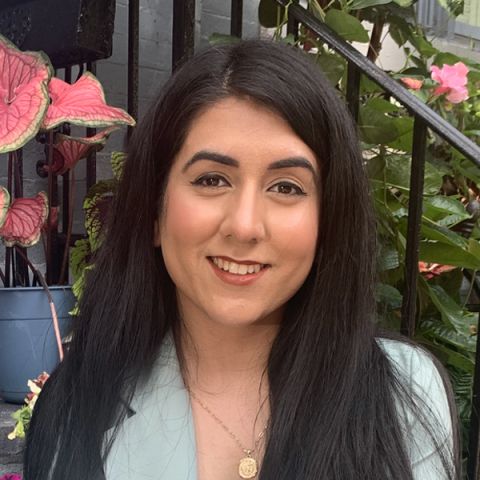Everyone has intersectionalities. If that’s the first time you have heard that word, that’s okay.
Intersectionality is the acknowledgment that everyone has their own experiences of discrimination and oppression and we must consider everything and anything that can marginalize people–gender, race, class, sexual orientation, physical ability, etc.
Everyone’s intersectionalities are unique. They influence your identity, perspectives, and decisions every day. This fact made me realize that when it comes to design, the personal experiences that anyone comes to a project with influence their creative choices.
LMD has grown a lot recently, with employees all over the country. Since it’s Diversity Month, I wanted to explore my colleagues’ intersectionalities and how those intersectionalities inspire their creativity in their day-to-day. To learn more about them, I posed two questions.
First I asked, “What about your background and intersectionalities influence and inspires your creativity?” Here are a few answers I received.
“I've witnessed my own mother, as a first-generation Filipino American, foster a comfortable life for our family by becoming an entrepreneur despite facing many hardships as an immigrant woman with English as a second language. Her perseverance is a driving force for me to create products and services that can help other marginalized groups gain confidence in what they do.”
“I grew up in a rural and poor part of the country. I have seen people living in trailers with no electricity and no plumbing, and I have had friends who live in hand-built shacks that could easily topple. I was very fortunate to have a normal standard of living and be spared from these conditions. However, seeing and interacting with them combined with the social isolation that often came from rural life made a big impact on me.”
“I have a diverse family through adoption, which brings a range of perspectives and experiences that I did not have prior.”
This sampling of answers shows that individuals can have many different experiences that cannot be surmised on the surface. It’s a testament to the saying “Don’t judge a book by its cover.” I believe that these differences among us should be celebrated and valued in both our professional and personal lives.
Then I asked my colleagues a follow-up question: “What are some of the things you do or create with these influences and inspiration in and outside of work?”
Some said that their experiences influenced them to become documentarians and visual storytellers to share their stories and the stories of important figures in their lives. Others said that they volunteer with community organizations so they can listen to and learn from marginalized voices. One LMD-er said, “I try to remind those who didn't have my experiences that there are many sides to problems and issues. I also continue to try to understand more about those problems I saw growing up.”
After reading all of the answers from my colleagues, I learned that not only is it important to employ the talents of those on your team, but it is also to understand how your team mates’ backgrounds and qualities can have a positive impact. Whether you are an intern just starting your career or an executive in leadership, you can benefit from listening to the stories of your team members.
Doing so creates the opportunity to open your mind and create a more accepting environment. Through the lens of marketing and design, listening and learning will help us better understand the opinions of our diverse audiences, the goals of our clients, and our duty to give a platform to the voices that go unheard.
Need help understanding your needs and the needs of your target audience? Contact LMD.

